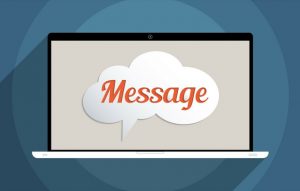Medium? Message? Huh?

A client of mine recently showed me their new website. After I commented on the nice clean design, I asked about content. The conversation went something like this…
Me: Nice website. How are you going to develop content?
Client: I was thinking of beefing up our social media.
Me: Social media isn’t content. What I mean is, what’s your message going to be?
Client: Oh. We’re thinking of doing a white paper, and maybe a case study?
Me: A whitepaper is not your message. It’s a mechanism for delivering your message.
Client: Oh.
Me: You have no idea what content to develop, do you?
Client: No, not really.
Me: OK, let me go to the whiteboard….
It would be one thing if this conversation was an isolated incident. But it’s not. It’s a recurring theme, especially among small marketing departments and small business owners. There seems to be a lack of understanding of the three aspects of content creation: The Message, The Medium, and Making It Known (Promotion). Let me see if I can clear things up a bit.
The Message
This is what your content is actually going to say. It’s the topic of the blog post, the essence of the tweet, the subject of the article, etc. Determining the Message should be a purposeful, planned exercise. I speak with too many business people who approach content develop with the question, “What should we write about?” That question should be answered by the time you begin writing. It’s answered by seeking to understanding who your buyer is, what they want, how they think and how they buy. This information is uncovered via research. Buyer personas, a documented buying process and audience content preferences should be the outcome. With these pieces of data, you should be able to determine what content and information your buyer deems relevant to their experience and desires. THAT’s what your Message should be.
The Medium
The Medium is the mechanism that holds the Message. A whitepaper. A blog post. A video. These are examples of Media. It’s often been said, “The Medium is the Message”. And I guess in a certain context that’s true. But when I work with marketing and sales people, and they say something like, “We should do a video series”, and I ask, “Great, what’s the topic (Message) going to be?”, their inability to answer tells me that Medium and Message are not always synonymous. So how does one determine which Media should be used? For one, start with the buyer research mentioned in the previous paragraph. Part of uncovering buyer insight through tools such as personas should be understanding the types of content your target personas are using. Also, your resources will determine which Media you can use. Let’s face it…not everyone has the budget, time, or skills needed to execute all Media well. So don’t try. Look to develop the Media channels that will reach your market effectively, without overextending your resources.
Making it Known
The last element for content creation is Making It Known to your audience, also known as “Promotion”. Search Engine Optimization. SEM. Pay Per Click. Social Media. Outbound. Inbound. All of these are promotional terms. They describe how you are going to get the Medium holding your Message to your audience. Budget and knowledge of the Medium are two primary drivers when it comes to deciding which Media are going to be used. And don’t let lack of knowledge keep you from using the right promotional tactic. For example, most companies need some kind of SEO strategy. However, not all marketing people know the ins and outs of SEO. So what! That shouldn’t prevent SEO from being implemented. Instead, learn about it and find a resource to implement it for you. What’s the point of having a great Message in a great Medium if no one knows about it? So, Make It Known.
If you are new to the content creation game, just remember: Message first, then Medium; then Make It Known. Doing so will help kick start your content creation engine.
